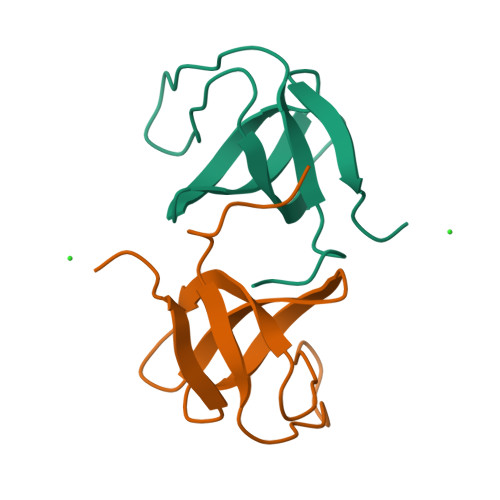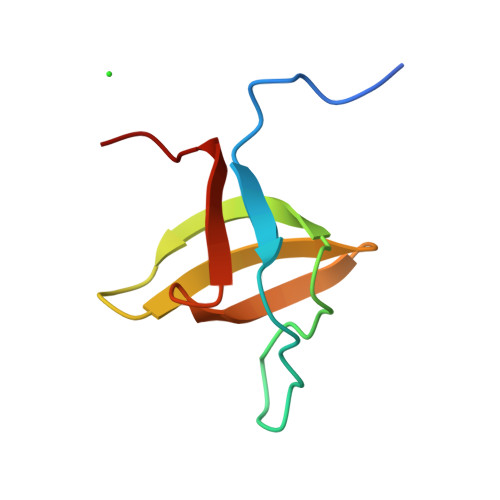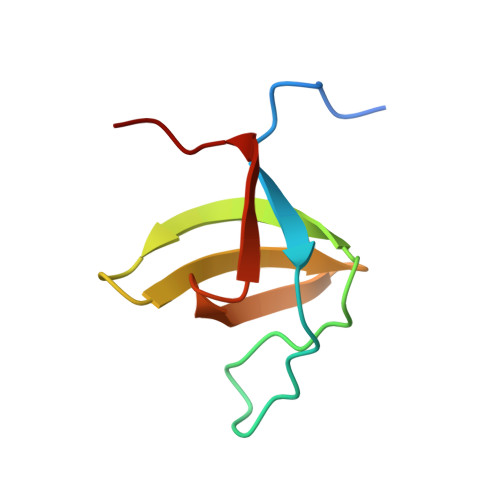SH3 domains from a subset of BAR proteins define a Ubl-binding domain and implicate parkin in synaptic ubiquitination.
Trempe, J.F., Chen, C.X., Grenier, K., Camacho, E.M., Kozlov, G., McPherson, P.S., Gehring, K., Fon, E.A.(2009) Mol Cell 36: 1034-1047
- PubMed: 20064468
- DOI: https://doi.org/10.1016/j.molcel.2009.11.021
- Primary Citation of Related Structures:
2KNB, 3IQL - PubMed Abstract:
Mutations in the parkin gene are responsible for a common inherited form of Parkinson's disease (PD). Parkin is a RING-type E3 ubiquitin ligase with an N-terminal ubiquitin-like domain (Ubl). We report here that the parkin Ubl binds SH3 domains from endocytic BAR proteins such as endophilin-A with an affinity comparable to proline-rich domains (PRDs) from well-established SH3 partners. The NMR structure of the Ubl-SH3 complex identifies the PaRK extension, a unique C-terminal motif in the parkin Ubl required for SH3 binding and for parkin-mediated ubiquitination of endophilin-A in vitro. In nerve terminals, conditions that promote phosphorylation enhance the interaction between parkin and endophilin-A and increase the levels of ubiquitinated proteins within PRD-associated synaptic protein complexes in wild-type but not parkin knockout brain. The findings identify a pathway for the recruitment of synaptic substrates to parkin with the potential to explain the defects in synaptic transmission observed in recessive forms of PD.
Organizational Affiliation:
Department of Biochemistry, McGill University, Montréal, Québec, Canada.




















